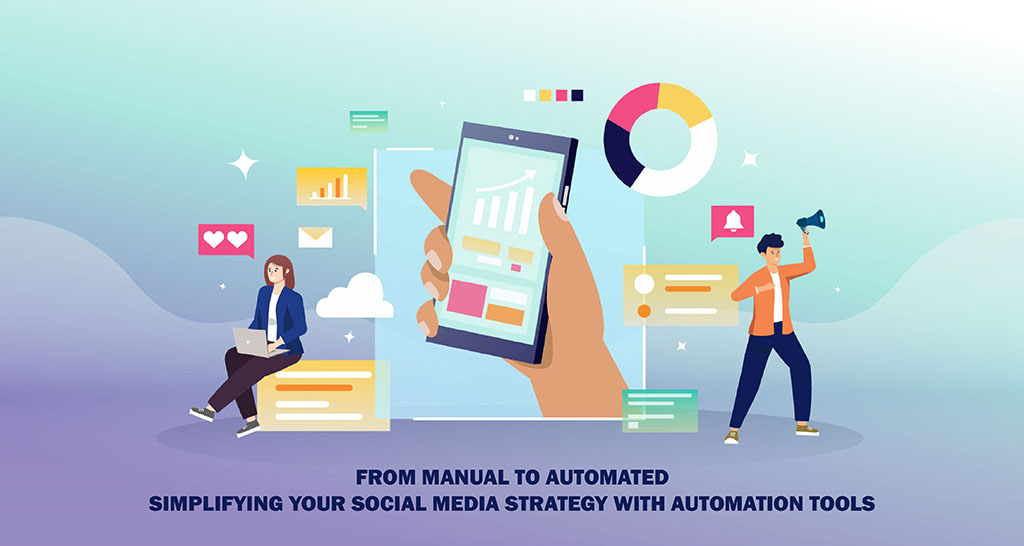Social media is a whirlwind of constant updates, trends, and demanding algorithms. Keeping up with it all manually can feel like a never-ending battle. However, businesses and content creators often need help maintaining a consistent social media presence, which can lead to missed audience growth and engagement opportunities.
This is where automating social media comes in. They streamline social media processes, save time, and increase the effectiveness of your strategy. This article will discuss how automation tools can simplify your social media strategies.
What is Social Media Automation?
Social media automating involves using specialized software to streamline tasks. It’s important to understand that automation doesn’t replace the human element of social media. Instead, it supports your efforts by handling repetitive and time-consuming activities. This frees up your time to focus on strategy, crafting engaging content, and building genuine relationships with your audience.
Some examples of tasks that can be automated include:
- Automated replies: Various social media automation tools can quickly help you achieve this. Some software also has Instagram AI bots that answer queries, send product recommendations, and nudge leads with timed follow-ups.
- Scheduling posts: Pre-writing and scheduling content to publish at optimal times, even when you’re not actively online.
- Social listening: These can monitor keywords, hashtags, and brand mentions, allowing you to stay aware of what’s being said about you online.
- Analytics and reporting: Such software can track key metrics like reach, engagement, and website traffic generated from social media. This helps you evaluate your strategy.
Benefits of Social Media Automation
Automating social media saves you valuable time. This lets you focus on connecting with your audience and achieving your goals. With social media automation, you can schedule your posts in advance. This means your audience will always see new content from you, even when you’re away from your computer or phone.
Management tools help you maintain a consistent posting schedule, which is key for building brand visibility and loyalty. They also provide analytics that let you target your content for maximum impact.
These tools show you what people like and how far your posts go. This helps you make changes that get you even better results on social media. Also, features like social listening help you stay on top of brand mentions. This allows you to participate in conversations and enhance customer relationships.
Choosing the Right Social Media Automation Tools
With a vast array of automated tools available, selecting the perfect one for your needs can feel overwhelming. Here are some key factors to consider:
- Identify Your Needs: Start by clearly defining your goals for using automation. Do you primarily need scheduling tools, in-depth analytics, or comprehensive community management features? Prioritize features that directly address your challenges and support your strategy.
- Free Trials and Pricing: Many software companies offer free trial periods. This allows you to explore their interface and functionalities before committing. Carefully research pricing plans to find a solution that fits your budget and scales with your needs.
- Platform Compatibility: Ensure the tool you choose integrates seamlessly with the social media platforms you actively use. Incompatibility can lead to frustrating workarounds and hinder your workflow.
- Additional Considerations: Look for user-friendly interfaces, customer support options, and positive user reviews.
Implementing Automation Tools Successfully
To implement automation tools successfully, start gradually. Begin by automating simple tasks like post-scheduling and adopting more advanced features as you get familiar with the tool. Remember that the software shouldn’t replace the human element of social media.
Monitor conversations, respond personally to comments, and ensure your brand’s personality shines through. Before automating, define clear goals and KPIs to track (such as increased engagement or website clicks).
Use your tool’s analytics to measure progress, identify strengths and weaknesses, and adjust as needed. Finally, stay flexible! Social media trends change quickly, so be prepared to adapt your strategy to stay ahead of the curve.

